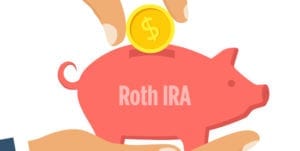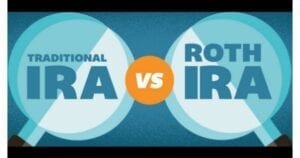
Retirement Planning


Investing for Major Financial Goals
How do you set goals?
The first step in investing is defining your dreams for the future. If you are married or in a long-term relationship, spend some time together discussing your joint and individual goals. It’s best to be as specific as possible. For instance, you may know you want to retire, but when? If you want to send your child to college, does that mean an Ivy League school or the community college down the street?
You’ll end up with a list of goals. Some of these goals will be long term (you have more than 15 years to plan), some will be short term (5 years or less to plan), and some will be intermediate (between 5 and 15 years to plan). You can then decide how much money you’ll need to accumulate and which investments can best help you meet your goals. Remember that there can be no guarantee that any investment strategy will be successful and that all investing involves risk, including the possible loss of principal.
Looking forward to retirement
After a hard day at the office, do you ask, “Is it time to retire yet?” Retirement may seem a long way off, but it’s never too early to start planning — especially if you want your retirement to be a secure one. The sooner you start, the more ability you have to let time do some of the work of making your money grow.
Let’s say that your goal is to retire at age 65 with $500,000 in your retirement fund. At age 25 you decide to begin contributing $250 per month to your company’s 401(k) plan. If your investment earns 6 percent per year, compounded monthly, you would have more than $500,000 in your 401(k) account when you retire. (This is a hypothetical example, of course, and does not represent the results of any specific investment.)
But what would happen if you left things to chance instead? Let’s say you wait until you’re 35 to begin investing. Assuming you contributed the same amount to your 401(k) and the rate of return on your investment dollars was the same, you would end up with only about half the amount in the first example. Though it’s never too late to start working toward your goals, as you can see, early decisions can have enormous consequences later on.
Some other points to keep in mind as you’re planning your retirement saving and investing strategy:
- Plan for a long life. Average life expectancies in this country have been increasing for years and many people live even longer than those averages.
- Think about how much time you have until retirement, then invest accordingly. For instance, if retirement is a long way off and you can handle some risk, you might choose to put a larger percentage of your money in stock (equity) investments that, though more volatile, offer a higher potential for long-term return than do more conservative investments. Conversely, if you’re nearing retirement, a greater portion of your nest egg might be devoted to investments focused on income and preservation of your capital.
- Consider how inflation will affect your retirement savings. When determining how much you’ll need to save for retirement, don’t forget that the higher the cost of living, the lower your real rate of return on your investment dollars.
Facing the truth about college savings
Whether you’re saving for a child’s education or planning to return to school yourself, paying tuition costs definitely requires forethought — and the sooner the better. With college costs typically rising faster than the rate of inflation, getting an early start and understanding how to use tax advantages and investment strategy to make the most of your savings can make an enormous difference in reducing or eliminating any post-graduation debt burden. The more time you have before you need the money, the more you’re able to take advantage of compounding to build a substantial college fund. With a longer investment time frame and a tolerance for some risk, you might also be willing to put some of your money into investments that offer the potential for growth.
Consider these tips as well:
- Estimate how much it will cost to send your child to college and plan accordingly. Estimates of the average future cost of tuition at two-year and four-year public and private colleges and universities are widely available.
- Research financial aid packages that can help offset part of the cost of college. Although there’s no guarantee your child will receive financial aid, at least you’ll know what kind of help is available should you need it.
- Look into state-sponsored tuition plans that put your money into investments tailored to your financial needs and time frame. For instance, most of your dollars may be allocated to growth investments initially; later, as your child approaches college, more conservative investments can help conserve principal.
- Think about how you might resolve conflicts between goals. For instance, if you need to save for your child’s education and your own retirement at the same time, how will you do it?
Investing for something big
At some point, you’ll probably want to buy a home, a car, maybe even that yacht that you’ve always wanted. Although they’re hardly impulse items, large purchases often have a shorter time frame than other financial goals; one to five years is common.
Because you don’t have much time to invest, you’ll have to budget your investment dollars wisely. Rather than choosing growth investments, you may want to put your money into less volatile, highly liquid investments that have some potential for growth, but that offer you quick and easy access to your money should you need it.

What are qualified distributions for a 529 College Savings plan?
Qualified distributions are used to pay for education expenses at eligible schools and institutions.
If withdrawals are used for purposes other than qualified education expenses, the earnings will be subject to a 10% federal tax penalty in addition to federal and, if applicable, state income tax. States take different approaches to the income tax treatment of withdrawals.
Higher education
Education expenses can include:
- Tuition and mandatory fees
- Required books, supplies and equipment
- If used primarily by the beneficiary while enrolled at an eligible higher educational institution:
- Computers or peripheral equipment (such as printers)
- Computer software
- Internet access and related services
- Room and board during any academic period during which the beneficiary is enrolled at least half-time in a degree, certificate or other program that leads to a recognized educational credential awarded by an eligible educational institution
- For students who live off campus, withdrawals may be used to pay up to the amount determined by the school for the room and board allowance for students who live off campus in its Cost of Attendance for the academic term.
- Services for a beneficiary with special needs
- Amounts paid as principal or interest (up to $10,000 lifetime maximum) on any qualified student loans of a designated beneficiary or their sibling for distributions made after December 31, 2018.
Tips: Participants can use their CollegeAmerica account for undergraduate and graduate school as well as specialized programs, such as medical or law school.
Kindergarten through 12th grade
Education expenses can include tuition for an elementary or secondary private school or religious school, up to a maximum of $10,000 incurred during the taxable year per beneficiary. Home school expenses are not considered a qualified education expense.
Note: Withdrawals for K–12 expenses may not be exempt from state tax in certain states. Please consult your tax advisor for state-specific details.
Apprenticeship programs
For distributions made after December 31, 2018, qualified expenses required for participation in an apprenticeship program registered and certified with the Secretary of Labor under Section 1 of the National Apprenticeship Act include:
- Fees
- Books
- Supplies
- Equipment
Nonqualified distributions
Nonqualified distributions are made to pay for ineligible expenses. When an account owner makes a nonqualified distribution:
- The principal (contribution amount) is not subject to taxes or penalties.
- The earnings are subject to a 10% federal tax penalty in addition to federal and, if applicable, state income tax.
Exceptions
Earnings on a distribution due to one of the following events are subject to federal income tax but not the 10% penalty:
- Death of the beneficiary
- Disability of the beneficiary
- Scholarship receipt (to the extent of the scholarship award)
Contact us today to schedule a free consultation and learn more about how you can set aside money for college!

Annual Financial To-Do List
Annual Financial To-Do List
Things you can do for your future as the year unfolds.
What financial, business, or life priorities do you need to address for the coming year? Now is an excellent time to think about the investing, saving, or budgeting methods you could employ toward specific objectives, from building your retirement fund to managing your taxes. You have plenty of choices. Here are a few ideas to consider:
Can you contribute more to your retirement plans this year? In 2021, the contribution limit for a Roth or traditional individual retirement account (IRA) is expected to remain at $6,000 ($7,000 for those making “catch-up” contributions). Your modified adjusted gross income (MAGI) may affect how much you can put into a Roth IRA. With a traditional IRA, you can contribute if you (or your spouse if filing jointly) have taxable compensation, but income limits are one factor in determining whether the contribution is tax-deductible.1
Remember, withdrawals from traditional IRAs are taxed as ordinary income, and if taken before age 59½, may be subject to a 10% federal income tax penalty starting again in 2021. Roth IRA distributions must meet a five-year holding requirement and occur after age 59½ to qualify for tax-exempt and penalty-free withdrawal. Tax-free and penalty-free withdrawals from Roth IRAs can also be taken under certain other circumstances, such as a result of the owner’s death.2
Keep in mind, this article is for informational purposes only, and not a replacement for real-life advice. Also, tax rules are constantly changing, and there is no guarantee that the tax landscape will remain the same in years ahead.
Make a charitable gift. You can claim the deduction on your tax return, provided you follow the Internal Review Service (I.R.S.) guidelines and itemize your deductions with Schedule A. The paper trail is important here. If you give cash, you should consider documenting it. Some contributions can be demonstrated by a bank record, payroll deduction record, credit card statement, or written communication from the charity with the date and amount. Incidentally, the I.R.S. does not equate a pledge with a donation. If you pledge $2,000 to a charity this year but only end up gifting $500, you can only deduct $500.3
These are hypothetical examples and are not a replacement for real-life advice. Make certain to consult your tax, legal, or accounting professional before modifying your record-keeping approach or your strategy for making charitable gifts.
See if you can take a home office deduction for your small business. If you are a small-business owner, you may want to investigate this. You may be able to write off expenses linked to the portion of your home used to conduct your business. Using your home office as a business expense involves a complex set of tax rules and regulations. Before moving forward, consider working with a professional who is familiar with home-based businesses.4
Open an HSA. A Health Savings Account (HSA) works a bit like your workplace retirement account. There are also some HSA rules and limitations to consider. You are limited to a $3,600 contribution for 2021 if you are single; $7,200 if you have a spouse or family. Those limits jump by a $1,000 “catch-up” limit for each person in the household over age 55.5
If you spend your HSA funds for non-medical expenses before age 65, you may be required to pay ordinary income tax as well as a 20% penalty. After age 65, you may be required to pay ordinary income taxes on HSA funds used for nonmedical expenses. HSA contributions are exempt from federal income tax; however, they are not exempt from state taxes in certain states.
Pay attention to asset location. Tax-efficient asset location is one factor that can be considered when creating an investment strategy.
Review your withholding status. Should it be adjusted due to any of the following factors?
* You tend to pay the federal or state government at the end of each year.
* You tend to get a federal tax refund each year.
* You recently married or divorced.
* You have a new job, and your earnings have been adjusted.
These are general guidelines and are not a replacement for real-life advice. Make certain to consult your tax, human resources, or accounting professional before modifying your withholding status.
Did you get married in 2020? If so, it may be an excellent time to consider reviewing the beneficiaries of your retirement accounts and other assets. The same goes for your insurance coverage. If you are preparing to have a new last name in 2021, you may want to get a new Social Security card. Additionally, retirement accounts may need to be revised or adjusted?
Are you coming home from active duty? If so, go ahead and check on the status of your credit and any tax and legal proceedings that might have been preempted by your orders.
Consider the tax impact of any upcoming transactions. Are you planning to sell any real estate this year? Are you starting a business? Might any commissions or bonuses come your way in 2021? Do you anticipate selling an investment that is held outside of a tax-deferred account?
If you are retired and in your seventies, remember your RMDs. In other words, Required Minimum Distributions (RMDs) from retirement accounts. Under the SECURE ACT, in most circumstances, once you reach age 72, you must begin taking RMDs from most types of these accounts.6
Vow to focus on your overall health and practice sound financial habits in 2021. And don’t be afraid to ask for help from professionals who understand your individual situation.
This material was prepared by MarketingPro, Inc., and does not necessarily represent the views of the presenting party, nor their affiliates. This information has been derived from sources believed to be accurate. Please note – investing involves risk, and past performance is no guarantee of future results. The publisher is not engaged in rendering legal, accounting or other professional services. If assistance is needed, the reader is advised to engage the services of a competent professional. This information should not be construed as investment, tax or legal advice and may not be relied on for the purpose of avoiding any Federal tax penalty. This is neither a solicitation nor recommendation to purchase or sell any investment or insurance product or service, and should not be relied upon as such. All indices are unmanaged and are not illustrative of any particular investment.
Riverfront Financial and The O.N. Equity Sales Company are unaffiliated companies
Citations
-
thefinancebuff.com, August 12, 2020
-
usnews.com, February 12, 2020
-
irs.gov, April 3, 2020
-
nerdwallet.com, July 31, 2020
-
msn.com, August 19, 2020
6. thestreet.com, December 21, 2019

The Tax Benefits of a Roth IRA
A Roth IRA’s Many Benefits
Why do so many people choose them over traditional IRAs?
Provided by Traci Kovacic
The IRA that changed the whole retirement savings perspective. Since the Roth IRA was introduced in 1998, its popularity has soared. It has become a fixture in many retirement planning strategies because it offers savers so many potential advantages.
The key argument for going Roth can be summed up in a sentence: Paying taxes on your retirement contributions today may be better than paying taxes on your retirement savings tomorrow.
Think about it. Would you rather pay taxes today or wait 10 years and see where the tax rates end up? With that in question in mind, here are some of the potential benefits associated with opening and contributing to a Roth IRA.
What you see is what you get. Roth IRA contributions are made with after-tax dollars, and any potential earnings on investments within a Roth IRA are NOT subject to income tax or included in the account owner’s income. Instead, they accumulate on a tax-deferred basis and are tax-free when withdrawn from the Roth if the distribution is qualified.1
You can arrange tax-free retirement income. Roth IRA earnings can be withdrawn tax-free as long as you are 59½ or older and have owned the account for at least 5 years. The IRS calls such tax-free withdrawals qualified distributions.2
Withdrawals don’t affect taxation of Social Security benefits. If your provisional income is between $25,000 and $34,000 — or $32,000 and $44,000 for joint filers — then your Social Security benefits may be taxed if you take withdrawals before your full retirement age. Luckily, a qualified distribution from a Roth IRA doesn’t count as taxable income, which may be a means of avoiding taxation on your social security benefit.3,4
You have until your tax-filing deadline to make a Roth IRA contribution for a given tax year. For example, IRA contributions for the 2020 tax year may be made up until April 15, 2021. While April 15 is the annual deadline, many IRA owners who make lump sum contributions for a given tax year make them as soon as that year begins, not in the following year. Making your Roth IRA contributions earlier gives the funds in the account more time to potentially grow. Remember, though that Roth IRA contributions cannot be made by taxpayers with high incomes. In 2020, the income phaseout limit was $139,000 for single filers and $206,000 for married couples who file jointly.5
Who can open a Roth IRA? Anyone with earned income (and that includes a minor).
How much can you contribute to a Roth IRA annually? The combined annual contribution limit to all of your traditional and Roth IRAs is $6,000 for 2019 and 2020 ($7,000 if you’re age 50 or older), but income limits may reduce or eliminate your ability to contribute. To sweeten the deal even further, you can keep making annual Roth IRA contributions all your life.6
All this may have you thinking about opening up a Roth IRA. A chat with the financial professional you know and trust may help you evaluate whether a Roth IRA is right for you, given your particular tax situation and retirement horizon.
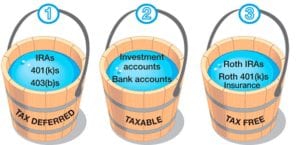
1-The Roth IRA offers tax deferral on any earnings in the account. Withdrawals from the account may be tax free, as long as they are considered qualified. Limitations and restrictions may apply. Withdrawals prior to age 59 ½ or prior to the account being opened for 5 years, whichever is later, may result in a 10% IRS penalty tax. Future tax laws can change at any time and may impact the benefits of Roth IRAs. Their tax treatment may change.
This material was prepared by MarketingPro, Inc., and does not necessarily represent the views of the presenting party, nor their affiliates. This information has been derived from sources believed to be accurate. Please note – investing involves risk, and past performance is no guarantee of future results. The publisher is not engaged in rendering legal, accounting or other professional services. If assistance is needed, the reader is advised to engage the services of a competent professional. This information should not be construed as investment, tax or legal advice and may not be relied on for the purpose of avoiding any Federal tax penalty. This is neither a solicitation nor recommendation to purchase or sell any investment or insurance product or service, and should not be relied upon as such. All indices are unmanaged and are not illustrative of any particular investment.
_________________________________________________________________________________
Traci L. Kovacic is a registered representative of and offers securities through The O.N. Equity Sales Company, Member FINRA/SIPC, One Financial Way; Cincinnati, OH 45242; (513)794-6794
Riverfront Financial and The O.N. Equity Sales Company are unaffiliated companies
Citations.
1 – irs.gov/retirement-plans/traditional-and-roth-iras [1/28/20]
2 – irs.gov/retirement-plans/traditional-and-roth-iras [1/28/20]
3 – kiplinger.com/slideshow/retirement/T055-S001-how-retirement-income-is-taxed/index.html [1/27/20]
4 – irs.gov/retirement-plans/traditional-and-roth-iras [1/28/20]
5 – morningstar.com/articles/852560/20-ira-mistakes-to-avoid [2/10/20]
6 – irs.gov/retirement-plans/traditional-and-roth-iras [1/28/20]
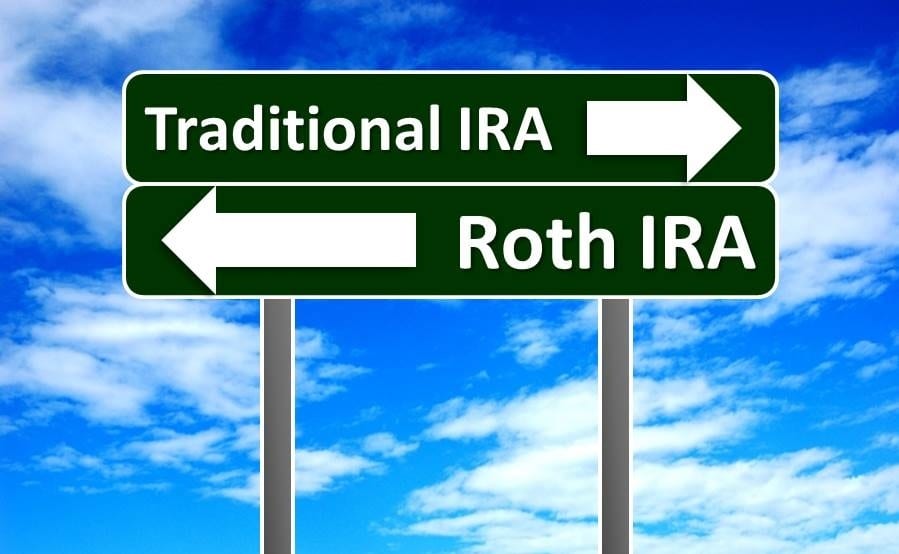
Traditional VS. Roth IRA
Traditional Vs. Roth IRA
Do you know the difference?
Provided by Traci Kovacic
Traditional Individual Retirement Accounts (IRA), which were created in 1974, are owned by roughly 33.2 million U.S. households. Roth IRAs, however, were created as part of the Taxpayer Relief Act in 1997, are owned by nearly 22.5 million households.1
Both are IRAs. And yet, each is quite different.
Know the limits. Up to certain limits, Traditional IRAs allow individuals to make tax-deductible contributions into the account. Distributions from traditional IRAs at retirement are taxed as ordinary income, and if taken before age 59½, may be subject to a 10-percent federal income tax penalty. Remember, under the SECURE Act, in most circumstances, once you reach age 72, you must begin taking required minimum distributions from a Traditional Individual Retirement Account (IRA). Additionally, you may continue to contribute to a Traditional IRA past age 70½, under the SECURE Act, as long as you meet the earned-income requirement.
Filing single. For singles, the maximum tax-deductible contribution starts shrinking once your modified adjusted gross income (MAGI) reaches $65,000. Singles with adjusted incomes of $75,000 and above are not eligible for a tax deduction.2
Filing jointly. For those who are married and filing jointly, things are a bit more complicated. If you or your spouse makes an IRA contribution that is covered by a workplace retirement plan, the deduction begins phasing out when your adjusted gross income is at $104,000, and it disappears at $124,000. However, if you do not have a workplace plan, but your spouse does (or vice versa), the 2020 limit starts at $196,000, and no tax deduction is allowed once the contributor’s income reaches $206,000.
Also, within certain limits, individuals can make contributions to a Roth IRA with after-tax dollars and then qualify for tax-free and penalty-free withdrawals at retirement. Roth IRA distributions must meet a five-year holding requirement and occur after age 59½.3
Income impacts total contributions. Like a traditional IRA, contributions to a Roth IRA are limited based on income. For 2020, contributions to a Roth IRA are phased out between $196,000 and $206,000 for married couples filing jointly and between $124,000 and $139,000 for single filers.
Contribution limits. In addition to distribution rules, there are limits on how much can be contributed each year to either IRA. In fact, these limits apply to any combination of IRAs; that is, workers cannot put more than $6,000 per year into their Roth and traditional IRAs, combined. So, if a worker contributed $3,500 in a given year into a traditional IRA, their contributions to a Roth IRA would be limited to $2,500 during that same year.4
Catch-up contributions. Individuals who reach age 50 or older by the end of the tax year can qualify for “catch-up” contributions. The combined limit for these is $7,000.5
Let’s chat. When it comes to picking an IRA, both traditional and Roth IRAs may play an important role in your retirement strategy. If you have any questions, let’s chat soon about how these products may be a good fit for your goals.
This material was prepared by MarketingPro, Inc., and does not necessarily represent the views of the presenting party, nor their affiliates. This information has been derived from sources believed to be accurate. Please note – investing involves risk, and past performance is no guarantee of future results. The publisher is not engaged in rendering legal, accounting or other professional services. If assistance is needed, the reader is advised to engage the services of a competent professional. This information should not be construed as investment, tax or legal advice and may not be relied on for the purpose of avoiding any Federal tax penalty. This is neither a solicitation nor recommendation to purchase or sell any investment or insurance product or service, and should not be relied upon as such. All indices are unmanaged and are not illustrative of any particular investment.
_________________________________________________________________________________
Traci L. Kovacic is a registered representative of and offers securities through The O.N. Equity Sales Company, Member FINRA/SIPC, One Financial Way; Cincinnati, OH 45242; (513)794-6794
Riverfront Financial and The O.N. Equity Sales Company are unaffiliated companies
Citations.
1 – irs.gov/retirement-plans/individual-retirement-arrangements-iras, [01/09/2020]
2 – irs.gov/retirement-plans/ira-deduction-limits, [12/20/2019]
3 – irs.gov/retirement-plans/are-you-covered-by-an-employers-retirement-plan [01/08/2020]
4 – irs.gov/retirement-plans/plan-participant-employee/retirement-topics-ira-contribution-limits [02/07/2020]
5 – Internal Revenue Service, 2019. The Tax Cuts and Jobs Act of 2017 eliminated the ability to “undo” a Roth conversion.

Changing jobs? You can roll your 401(k) into an IRA
Top 5 Reasons to Roll Over Your 401(k) to an IRA
The benefits of rolling over your 401(k) when you leave a job
Whenever you change jobs, you have several options with your 401(k) plan account. You can cash it out, leave it where it is, transfer it into your new employer’s 401(k) plan (if one exists), or roll it over into an individual retirement account (IRA).
Forget about cashing it out—taxes and other penalties are likely to be huge. For most people, rolling over a 401(k)—or the 403(b) cousin, for those in the public or nonprofit sector—into an IRA is the best choice. Below are five reasons way. Keep in mind these reasons assume that you are not on the verge of retirement or at an age when you must start taking required minimum distributions (RMDs) from a plan.
1. More Investment Choices
Your 401(k) is limited to a few planets in the investment universe. In all likelihood, you have the choice of a few mutual funds—mostly equity funds and a bond fund or two—and that’s it. However, with an IRA, we would help you to pick our funds that are directly in line with your future financial goals. Contact us here for more information on IRA’s
2. Direct Communication
If you leave your account with your old employer, you might be treated as a second-class citizen, though not deliberately. It just might be harder to get communications regarding the plans (often news is distributed through company email) or get in touch with an advisor or administrator. At Riverfront Financial, we stay in constant contact with our clients to make sure you are always up to date with what is happening with your investments.
3. Lower Fees and Costs
You’d have to crunch the numbers on this one, but rolling over into an IRA could save you a lot in management fees, administrative fees, and fund expense ratios—all those little costs that can eat into investment returns over time. The funds offered by the 401(k) plan may be more expensive than the norm for their asset class. And then there is the overall annual fee that the plan administrator charges.
At Riverfront Financial we never charge you a hourly rate or asset fee to meet with us. We work directly with American Funds to set up your Individual IRA and Roth IRA savings accounts. Financial advisors can be paid many different ways. We take our fiduciary responsibility very seriously. We make sure to go over all of your investment choices in detail, and explain exactly how your new account will work to sure that all of the investments are in your absolute best interest.
4. The Option to Roll into a Roth IRA
An IRA rollover opens up the possibility of a Roth account. (In fact, if yours is one of the increasingly common Roth 401(k)s, a Roth IRA is the preferred rollover option). With Roth IRAs, you pay taxes on the funds you contribute when you contribute them, but then there is no tax due when you withdraw them (the opposite of a traditional IRA). Nor do you have to take RMDs at age 72—or indeed, ever—from a Roth IRA.
If you believe you will be in a higher tax bracket or tax rates will be generally higher when you start needing your IRA money, a Roth might be in your best interest. If you’re under the age of 59½, it’s also a lot easier to withdraw funds from a Roth IRA than from a traditional one. There are no early-withdrawal penalties for contributions, in most cases, though there are for any earnings.
Your 401(k) plan administrator may only permit rollovers to a traditional IRA. If so, you’ll have to do that and then convert it to a Roth. We can help you every step of the way in the process to roll over your 401(k). Contact us here for more information.
5. Estate Planning Advantages
Upon your death, there’s a good chance that your 401(k) will be paid in one lump sum to your beneficiary, which could cause income and inheritance tax headaches. It varies depending on the particular plan, but most companies prefer to distribute the cash fast, so they don’t have to maintain the account of an employee who is no longer there. Inheriting IRAs has its regulations too, but IRAs offer more payout options. Again, it comes down to control. When you own your account directly, you have the control. We are there every step of the way to make sure your beneficiaries are up to date, and help to make sure you and your family have the most tax advantaged options for payouts.
The 2020 contribution limit for those participating in a 401(k) or 403(b) plan is $19,500, up from $19,000 in 2019, according to the most-recent IRS guidelines, while the catch-up limit for those 50 and over rises to $6,500 in 2020 from $6,000 in 2019. The 2020 limit for IRAs is $6,000, unchanged from 2019, while the catch-up limit is an extra $1,000.
The Bottom Line
For most people switching jobs, there are many advantages to rolling over a 401(k) into an IRA.
You could also have the best of both worlds. You don’t have to roll all of your money into an IRA. Some of your balance can remain in your former company’s 401(k) if you’re happy with the returns you’re receiving. You can then set up a new IRA or roll over the remainder into an existing account or a new rollover IRA. After you’ve done your rollover, you can contribute to both your new company’s 401(k) and an IRA (traditional or Roth) as long as you don’t go over your annual contribution limit.
However, depending on your income level, your ability to deduct your contribution to a traditional IRA may be limited.
By working with us, we help to make sure you have all the information you need to make the right decisions about your retirement accounts. We never charge a fee to meet with us, contact us today to get started!
Citation: investopedia.com
Traci L. Kovacic is a registered representative of and offers securities through The O.N. Equity Sales Company, Member FINRA/SIPC, One Financial Way; Cincinnati, OH 45242; (513)794-6794
Riverfront Financial and The O.N. Equity Sales Company are unaffiliated companies

Retirement Challenges for Women
Conquering Retirement Challenges for Women
Looking ahead can help you conquer these unique obstacles.
When it comes to retirement, some women face obstacles that can make saving for retirement a challenge. Women typically earn less than their male counterparts and often take time out of the workforce to care for children or other family members. Added to the fact that women typically live longer than men, retirement money for women may need to stretch even further.1 Despite these challenges, there are a lot of reasons to be hopeful.2
Review your existing situation. Do you want to spend your years traveling together, or do you envision staying closer to home? Are you seeing yourself moving to a retirement community, or do you want to live as independently as you can? Sit down with your spouse, if you’re married, to discuss your visions for retirement.
You can’t see if you’re on track for your goals if you haven’t defined them. And if you find you’re falling short of where you want to be, you can work together to strategize about how you can either get to where you want to go or to adjust your strategy so that it fits your existing situation.1
Get creative. These challenges don’t have to stop you from saving for retirement if you’re willing to get creative. If you plan to or have taken off time from the workforce, try and increase your contributions to your retirement accounts while you are working. If you’re staying home while your spouse works, you may be able to contribute to an individual retirement account.3
Under the SECURE Act, once you reach age 72, you must begin taking required minimum distributions from a Traditional Individual Retirement Account and other retirement plans in most circumstances. Withdrawals from Traditional IRAs are taxes as ordinary income and, if taken before age 59½, may be subject to a 10% federal income tax penalty. Under the CARES Act, the 10% penalty may be waived in 2020. Traditional IRA may be fully or partially deductible, depending on your adjusted gross income.
If you’re caregiving for an elderly relative, there are ways to be paid for your time. According to AARP, the Veteran’s Administration or Medicaid may be a potential source of income. Working with a professional who has expertise in this field can help you navigate the complicated medical structure while also helping you earn income for work that you’re doing.3
Get involved. One of the best things you can do is to get involved in conversations about finances. Many women undervalue their knowledge in this area and having regular conversations with your spouse, family, and financial professional can help ensure that you always know where things stand.3
While women may face additional challenges, careful preparation with your financial professional may help you to live a fulfilling retirement.
This material was prepared by MarketingPro, Inc., and does not necessarily represent the views of the presenting party, nor their affiliates. This information has been derived from sources believed to be accurate. Please note – investing involves risk, and past performance is no guarantee of future results. The publisher is not engaged in rendering legal, accounting or other professional services. If assistance is needed, the reader is advised to engage the services of a competent professional. This information should not be construed as investment, tax or legal advice and may not be relied on for the purpose of avoiding any Federal tax penalty. This is neither a solicitation nor recommendation to purchase or sell any investment or insurance product or service, and should not be relied upon as such. All indices are unmanaged and are not illustrative of any particular investment.
Traci L. Kovacic is a registered representative of and offers securities through The O.N. Equity Sales Company, Member FINRA/SIPC, One Financial Way; Cincinnati, OH 45242; (513)794-6794
Riverfront Financial and The O.N. Equity Sales Company are unaffiliated companies
Citations
-
CNBC.com, March 6, 2020
-
Entrepreneur.com, August 13, 2020
-
MarketWatch.com, March 6, 2020
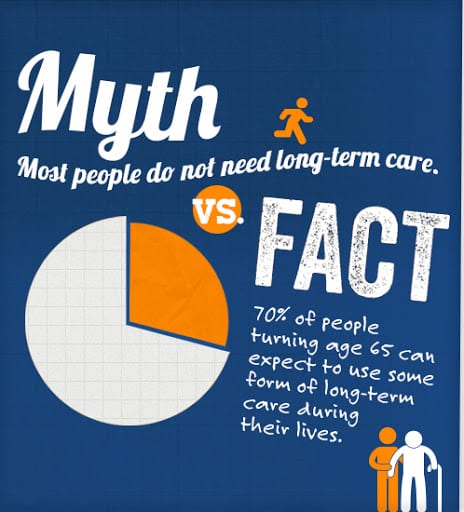
How Much Do You Really Know About Extended Care?
How Much Do You Really Know About Extended and Eldercare?
Separating some eldercare facts from eldercare myths.
How much does eldercare cost, and how do you arrange it when it is needed? The average person might have difficulty answering those two questions, for the answers are not widely known. For clarification, here are some facts to dispel some myths.
True or false: Medicare will pay for your mom or dad’s nursing home care.
FALSE. Medicare is not extended care insurance.1
Medicare Part A will pay the bill for up to 20 days of skilled nursing facility (SNF) care, but after that, you or your parents may have to cover some costs out-of-pocket. After 100 days in a SNF, you will have to cover all costs out of pocket. The only way to “reset the clock” for Medicare coverage of these services is if the patient can somehow go without skilled nursing care for 30 or 60 days or if they require a hospital stay of three full days or longer.1
True or false: A semi-private room in a skilled nursing facility costs about $35,000 a year.
FALSE. The median cost of a semi-private room is now $89,297. A private room in an assisted living facility has a median annual cost of $100,375 annually. A home health aide could run you up to $4385 per month for full-time care. Even if you just need someone to help mom or dad with activities of daily living (ADLs), such as eating, bathing, or getting dressed, the median hourly expense is not cheap: non-medical home aides run about $23 per hour, which at 10 hours a week, means nearly $12,000 a year.2,3
True or false: Only around 40% of Americans aged 65 and older are expected to need extended care.
FALSE. Someone turning 65 today has a 70% chance of needing extended care. That means that by 2030, it’s estimated that around 24 million Americans will need extended care. This is double the current number already receiving care.4,5
True or false: The earlier you buy extended care insurance, the more manageable the premiums.
TRUE. Younger policyholders may pay lower premiums. The best time to consider extended care insurance is when you are healthy. While you may be paying a premium for a longer amount of time, the expense may pale in comparison to paying for unexpected medical costs out of pocket.6
True or false: Medicaid can pay nursing home costs.
TRUE. The question is, do you really want that to happen? While Medicaid rules vary by state, in most instances, a person may only qualify for Medicaid if they have no more than $2,000 in “countable” assets ($3,000 for a couple). A homeowner can even be disqualified from Medicaid for having too much home equity. A primary residence, a primary motor vehicle, personal property, and household items, burial funds of less than $1,500, and tiny life insurance policies (with face values of less than $1,500) are not countable. So, yes, under these economic circumstances, Medicaid may end up paying extended care expenses.7
A little strategizing now could make a big difference in the years to come. Call or email us today to learn more about ways to pay for extended care and discuss your choices. You may need to find a way to address this concern.
Traci L. Kovacic is a registered representative of and offers securities through The O.N. Equity Sales Company, Member FINRA/SIPC, One Financial Way; Cincinnati, OH 45242; (513)794-6794
Riverfront Financial and The O.N. Equity Sales Company are unaffiliated companies
Citations
- Medicare.gov, March 26, 2020
- SeniorLiving.org, June 24, 2020
- APlaceForMom.com, May 11, 2020
- AmericanActionForum.org, February 18, 2020
- LongTermCare.gov, July 23, 2020
- Forbes.com, April 17, 2020
- LongTermCare.ACL.gov, July 23, 2020
This material was prepared by MarketingPro, Inc., and does not necessarily represent the views of the presenting party, nor their affiliates. This information has been derived from sources believed to be accurate. Please note – investing involves risk, and past performance is no guarantee of future results. The publisher is not engaged in rendering legal, accounting or other professional services. If assistance is needed, the reader is advised to engage the services of a competent professional. This information should not be construed as investment, tax or legal advice and may not be relied on for the purpose of avoiding any Federal tax penalty. This is neither a solicitation nor recommendation to purchase or sell any investment or insurance product or service, and should not be relied upon as such. All indices are unmanaged and are not illustrative of any particular investment.
How Much Money Will You Need for Retirement?
How Much Money Will You Need for Retirement?
It depends on your goals, time horizon, and risk tolerance.
“Will I outlive my retirement money?”
That’s one of the top fears for people who are starting to prepare for their retirement years.
So I have to chuckle a bit when I see headlines that say, “Here’s how much money Americans think they need to retire comfortably.”1 $1.9 million is the number, according to a nationwide survey of 1,000 employed 401(k) participants by a well-known financial services company. In 2019, the same survey reported the number was $1.7 million. But this year’s pandemic increased the total by $200,000.2 Is $1.9 million a realistic figure for retirement? It’s hard to say. The survey didn’t ask participants how they arrived at that figure or what information they used to draw that conclusion.
Determining how much money you need in retirement is a process. It shouldn’t be a number that you pull out of thin air.
The process should include looking at your current financial situation and developing an approach based on your goals, time horizon, and risk tolerance. The process should take into consideration all your potential sources of retirement income, and also may project what your income would look like each year in retirement.
A significant figure like $1.9 million does little good if you’re uncertain what it means for your retirement years. We can help you develop a retirement strategy and show you investment ideas designed to help you pursue the retirement of your dreams.
Contact us anytime at 412-837-2400 to set up a free financial review.
Traci Kovacic Tkovacic@Riverfrontfinancialpgh.com
Joe Kovacic TKovacic@Riverfrontfinancialpgh.com
This material was prepared by MarketingPro, Inc., and does not necessarily represent the views of the presenting party, nor their affiliates. This information has been derived from sources believed to be accurate. Please note – investing involves risk, and past performance is no guarantee of future results. The publisher is not engaged in rendering legal, accounting or other professional services. If assistance is needed, the reader is advised to engage the services of a competent professional. This information should not be construed as investment, tax or legal advice and may not be relied on for the purpose of avoiding any Federal tax penalty. This is neither a solicitation nor recommendation to purchase or sell any investment or insurance product or service, and should not be relied upon as such. All indices are unmanaged and are not illustrative of any particular investment.
Traci L. Kovacic is a registered representative of and offers securities through The O.N. Equity Sales Company, Member FINRA/SIPC, One Financial Way; Cincinnati, OH 45242; (513)794-6794
Riverfront Financial and The O.N. Equity Sales Company are unaffiliated companies
Citations.
-
FoxBusiness.com, August 4, 2020
2. Pressroom.aboutshwab.com, August 4, 2020



